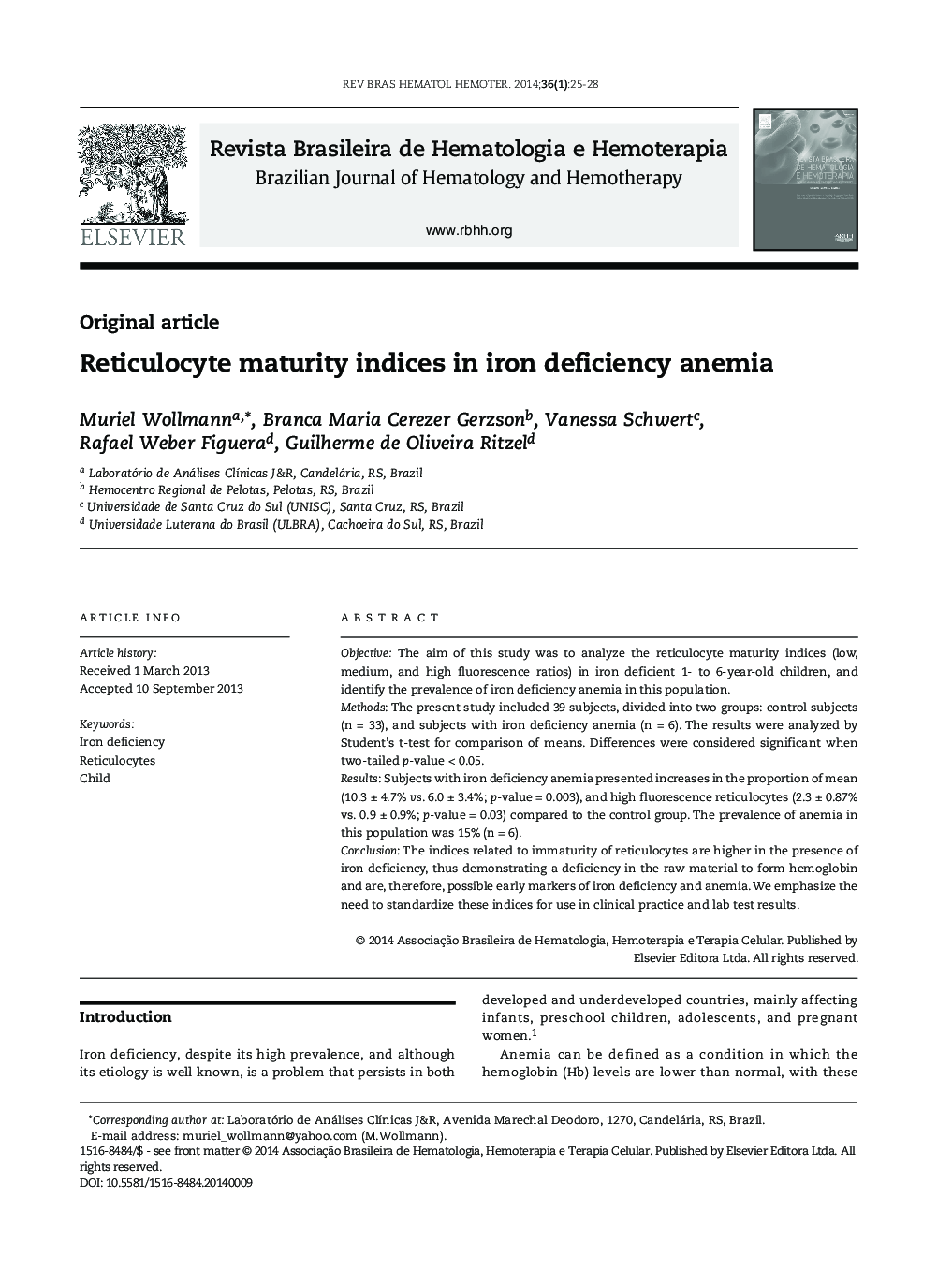| Article ID | Journal | Published Year | Pages | File Type |
|---|---|---|---|---|
| 3333104 | Revista Brasileira de Hematologia e Hemoterapia | 2014 | 4 Pages |
ABSTRACTObjectiveThe aim of this study was to analyze the reticulocyte maturity indices (low, medium, and high fluorescence ratios) in iron deficient 1- to 6-year-old children, and identify the prevalence of iron deficiency anemia in this population.MethodsThe present study included 39 subjects, divided into two groups: control subjects (n = 33), and subjects with iron deficiency anemia (n = 6). The results were analyzed by Student’s t-test for comparison of means. Differences were considered significant when two-tailed p-value < 0.05.ResultsSubjects with iron deficiency anemia presented increases in the proportion of mean (10.3 ± 4.7% us. 6.0 ± 3.4%; p-value = 0.003), and high fluorescence reticulocytes (2.3 ± 0.87% vs. 0.9 ± 0.9%; p-value = 0.03) compared to the control group. The prevalence of anemia in this population was 15% (n = 6).ConclusionThe indices related to immaturity of reticulocytes are higher in the presence of iron deficiency, thus demonstrating a deficiency in the raw material to form hemoglobin and are, therefore, possible early markers of iron deficiency and anemia. We emphasize the need to standardize these indices for use in clinical practice and lab test results.© 2014 Associação Brasileira de Hematologia, Hemoterapia e Terapia Celular. Published by Elsevier Editora Ltda. All rights reserved.
